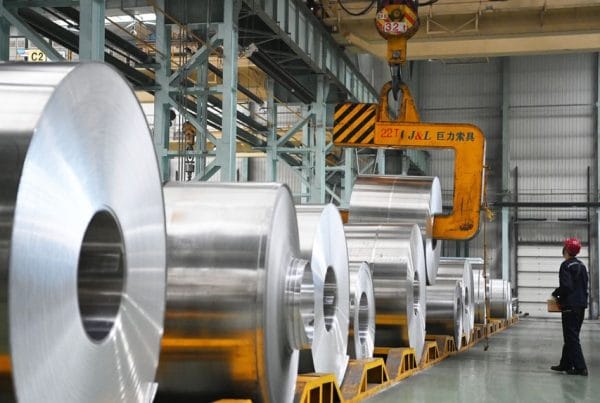The good forecasts in the Asian country are also being reflected in the real estate market. This past Monday, February 20, it was reported that new home sales in 16 Chinese cities rose for the third consecutive week, according to a private survey. The reopening of China's infrastructure and the policy of supporting real estate are boosting the construction sector and, therefore, the demand for its basic materials, including metals.
In fact, China's consumption of base metals and steel products represents a significant percentage of global demand. Already last year, consumption increased at a relatively healthy pace and, according to Reuters, imports of copper and aluminum grew significantly - specifically, in the case of copper, the increase was almost 300,000 tons over 2021. Simultaneously, imports of mined concentrates reached a new annual record of 25.32 million tons.
However, this increase in demand clashes with a supply slowdown in the Asian country and visible inventories that remain historically low.
Last year, China's aluminum production increased by 4.5% year-on-year to a record high, driven largely by the easing of electricity supply restrictions. Now the tables have turned. This week it emerged that China's smelters were curbing production after Yunnan province called on aluminum producers to cut power consumption by 40-42% from September levels.
Aluminum capacity is expected to fall by 800,000 tons in Yunnan due to the cuts, industry information provider Shanghai Metals Market has noted. For its part, Citi noted in a note that another 415,000 tons of smelting capacity was ordered to be cut in the province over the weekend. Analysts estimate that production cuts at Chinese smelters since the middle of last year will reduce supply from the top consumer to less than 40 million tons by the end of February.
... and prices that are underpinned by the raw material
Against this backdrop, metal prices are reacting accordingly. Three-month CMAL3 aluminum on the LME advanced 2.6% to $2,449 a tonne on Monday. Yesterday, Tuesday, aluminum was up 0.6% at $2,472 a tonne, after touching its highest since February 10 at $2,485.
"Aluminum prices have been supported by the prospect of reduced Chinese capacity due to energy availability. This could lead to production cuts when seasonal demand starts to pick up in March," says Geordie Wilkes, analyst at Sucden Financial.
Moreover, forecasts are pointing even higher. Goldman Sachs Group has raised its price forecasts for aluminum, noting that stronger demand in Europe and China could lead to supply shortages. "The metal is likely to average $3,125 a tonne this year in London," noted analysts Nicholas Snowdon and Aditi Rai. Goldman forecasts the metal will rise to $3,750 a tonne over the next 12 months.
"With global inventories visible at just 1.4 million tons, down 900,000 tons from a year ago and now the lowest since 2002, the return of an aggregate deficit will quickly generate shortage concerns," analysts said. "Confronted with a much more benign macro environment, fading dollar headwinds and a slowing Fed hike cycle, we expect upward price momentum to build progressively in the spring," they add.
... and in the listed companies of the sector
These projections will also be reflected in the business of international steel companies, as foreign suppliers are also expecting strong market growth, but are already doing so in the stock market price of this type of company.
If we look at two of the companies in the Spanish stock market sector, Acerinox and ArcelorMittal, they are two of the listed companies that could benefit not so much at a business level as from the rise in raw materials and its reflection in the markets.
In the case of ArcelorMittal, the world's largest steelmaker outside China, 57% of its sales are concentrated in Western Europe, 17% in Brazil, 16% in NAFTA and the remaining 13% in Eastern Europe and Russia. For its part, the geographical distribution of Acerinox's turnover in 2021 was: 49% in the Americas, 37.5% in Europe, 8.1% in Asia, 5.2% in Africa and 0.2% in Oceania.
On the stock market side, the rise in the prices of their raw materials is reflected in the year-to-date performance in both cases (ArcelorMittal up 15.7% and Acerinox up 12.9%) and in the good recommendations from analysts. If we take into account the consensus of the analyst firms, as reported by Reuters, the recommendation for Acerinox and ArcelorMittal shares is to buy, and the potential is double-digit for both, specifically 17.2% for ArcelorMittal and 28.3% for Acerinox.



